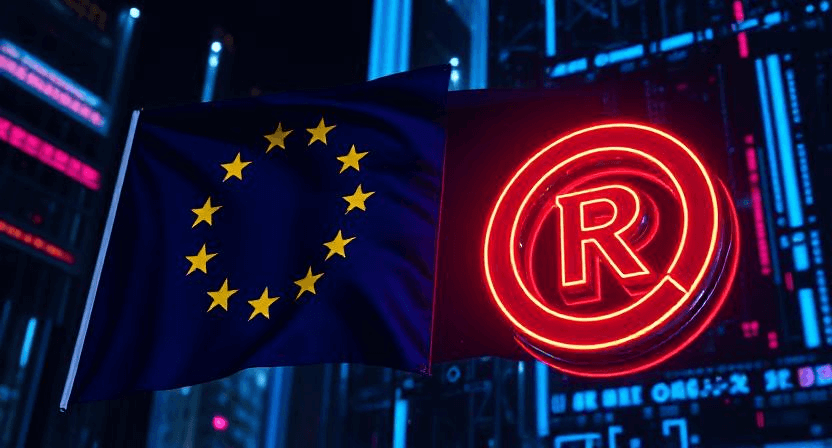A Comprehensive Guide to Registering an EU Trade Mark (EUTM) Through the European Union Intellectual Property Office (EUIPO)
 Securing trademark protection across the European Union’s 27 member states has never been more streamlined, thanks to the EU Trade Mark (EUTM) system administered by the European Union Intellectual Property Office (EUIPO). This unified process allows businesses and individuals to obtain trademark rights across all EU countries with a single application, eliminating the need for costly and time-consuming national registrations. Below, we break down the EUTM registration process step by step.
Securing trademark protection across the European Union’s 27 member states has never been more streamlined, thanks to the EU Trade Mark (EUTM) system administered by the European Union Intellectual Property Office (EUIPO). This unified process allows businesses and individuals to obtain trademark rights across all EU countries with a single application, eliminating the need for costly and time-consuming national registrations. Below, we break down the EUTM registration process step by step.
1. Understanding the EUTM Advantage
An EUTM grants exclusive rights to use a trademark (e.g., logos, words, slogans, or designs) in all 27 EU member states. Key benefits include:
- Cost Efficiency: One application fee covers protection in all EU countries.
- Simplified Management: Renewals, transfers, or changes are handled centrally through EUIPO.
- Strong Legal Protection: Enforcement is possible across the entire EU market.
2. Pre-Filing Steps
a. Conduct a Trademark Search
Before applying, use EUIPO’s eSearch plus tool to check for existing conflicting trademarks. This minimizes rejection risks due to similarity or duplication. Consider hiring a professional to conduct a broader search, including unregistered rights or national trademarks in specific jurisdictions.
b. Define Goods/Services
Classify your trademark using the Nice Classification system. EUIPO requires applicants to specify the goods/services covered by the trademark across 45 classes. Overly broad descriptions may face objections, so aim for clarity and precision.
3. Filing the Application
a. Submit to EUIPO
Applications can be filed online via EUIPO’s website or through national IP offices. Required information includes:
- Applicant’s name and address.
- A clear representation of the trademark.
- List of goods/services and their classes.
Fees: The base fee is €850 (one class, electronic application). Additional classes cost €50 each.
b. Language Requirements
Applications can be submitted in any of the EU’s 24 official languages, but you must designate a second language (English, French, German, Italian, or Spanish) for opposition proceedings.
4. Examination Process
a. Formal Examination
EUIPO reviews the application for completeness and adherence to formal requirements (e.g., payment, classification accuracy). Issues here are typically minor and resolvable via amendments.
b. Substantive Examination
EUIPO checks for absolute grounds of refusal, such as:
- Lack of distinctiveness.
- Descriptive or generic terms.
- Deceptiveness or violation of public policy.
Note: EUIPO does not assess conflicts with prior trademarks at this stage.
5. Publication and Opposition
If the application passes examination, it is published in the EU Trade Marks Bulletin. From this date, third parties have 3 months to file oppositions based on:
- Earlier EUTMs or national trademarks.
- Well-known unregistered marks.
- Other rights (e.g., copyrights, geographical indications).
Applicants can respond to oppositions by negotiating coexistence agreements, limiting their goods/services, or challenging the opposition’s validity.
6. Registration and Protection
If no oppositions arise (or if disputes are resolved), the trademark is registered. Protection lasts 10 years, renewable indefinitely. EUIPO issues a certificate, and the mark is added to the EUTM register.
Key Post-Registration Considerations:
- Use Requirements: The trademark must be put to “genuine use” in the EU within 5 years of registration to avoid vulnerability to cancellation.
- Enforcement: Rights holders can take legal action against infringements in any EU member state.
- Renewal: File renewal applications within 6 months before expiry (€850 for one class + €50 per additional class).
7. Managing Challenges
- Cancellation Actions: Third parties may seek to invalidate your EUTM on grounds like non-use or bad faith.
- Appeals: Decisions by EUIPO (e.g., refusal, opposition outcomes) can be appealed to the EUIPO Boards of Appeal and later to the General Court of the EU.
FAQs
Q: How long does the EUTM process take?
A: If unopposed, registration typically takes 4–6 months. Oppositions or disputes can extend this to 12–18 months.
Q: Can non-EU entities apply?
A: Yes, but non-EU applicants must appoint an EU-based representative.
Q: What if an EU country leaves the EU?
A: Existing EUTMs remain valid in remaining member states. Separate national rights may need to be re-established in departing countries.
Conclusion
The EUTM system offers a cost-effective, efficient path to securing pan-European trademark protection. By understanding the process—from pre-filing searches to post-registration management—businesses can safeguard their brands and capitalize on opportunities in the EU’s dynamic market. For complex cases, consulting an IP professional is highly recommended to navigate potential pitfalls and maximize the value of your trademark.
Learn more: Visit EUIPO’s official website for guidelines, fees, and application tools.
This guide simplifies the complexities of EUTM registration, empowering businesses to protect their intellectual property with confidence in the EU’s unified marketplace.
Share this page
